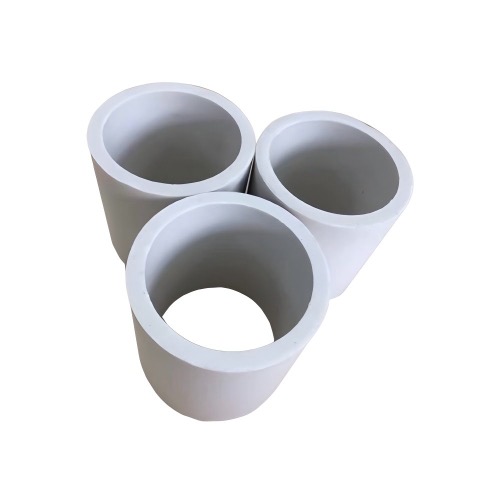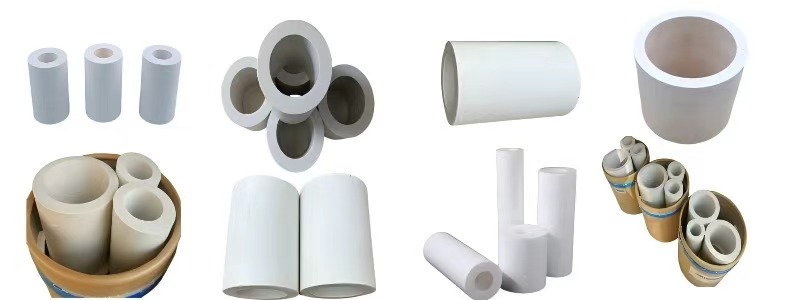
Productscpzx



Introduction to Fiberglass Sleeving
Fiberglass Sleeving, fully known as Fiberglass Braided Sleeving, is an insulating protective material made by braiding fiberglass yarn into a tubular shape and then treating it through high-temperature setting or coating with special chemical materials.
It is a fundamental yet essential industrial component primarily used for insulation, flame retardation, heat resistance, and mechanical protection.
Key Characteristics
The widespread application of fiberglass sleeving stems from its excellent comprehensive properties:
1. Exceptional Heat Resistance: This is its core feature. Conventional fiberglass sleeving can operate continuously at temperatures of 150°C to 200°C, while some special types (e.g., silicone-treated) can withstand temperatures as high as 500°C to 700°C. It does not melt or support combustion.
2. High Electrical Insulation: Fiberglass itself is an excellent electrical insulator with high dielectric strength, effectively preventing short circuits and leakage.
3. Outstanding Flame Retardancy: Typically compliant with UL94 V-0 standards, it self-extinguishes upon removal from an open flame and does not propagate flames.
4. Good Chemical Stability: Resists corrosion from most organic solvents, acids, and alkalis; also anti-mold and moisture-proof.
5. Flexible Mechanical Properties: Offers certain flexibility and elasticity, making it easy to bend and install, adaptable to complex wiring paths.
6. High Strength: The fiberglass material provides good tensile strength and wear resistance, effectively protecting internal wires and cables from cutting, friction, and impact damage.
Common Types and Treatments
Based on surface treatment processes, fiberglass sleeving is mainly categorized as follows:
- Bare Sleeving (Braid Only):
- Made solely from braided fiberglass without any coating.
- Characteristics: Highest heat resistance (up to 500°C+), good breathability, but relatively poor wear resistance and insulation; fiberglass filaments may shed. Typically used in high-temperature applications without insulation requirements, such as thermal insulation sleeves.
- Silicone Resin Fiberglass Sleevings:
- Impregnated with organic silicone resin and then dried and cured. This is the most common and widely used type.
- Characteristics: While retaining high heat resistance (typically -60°C to +200°C), it offers excellent electrical insulation, flexibility, and mechanical strength. The surface is smooth and resistant to weather aging. Available in various colors (common ones include yellow, white, red, black, etc.).
- Acrylic Resin Fiberglass Sleevings:
- Impregnated with acrylic resin and then cured.
- Characteristics: Good electrical insulation, flexibility, and wear resistance; generally lower cost than silicone resin sleeving. Lower temperature resistance (typically around 130°C to 155°C).
- Self-Extinguishing Fiberglass Sleevings:
- Treated specially to provide excellent flame retardancy.
Main Application Areas
Fiberglass sleeving is extremely versatile, covering almost all industries requiring electrical and thermal protection:
- Household Appliance Industry: Protection for wire harnesses inside microwaves, ovens, irons, hair dryers, heaters, etc., especially near heating elements.
- Electronics Industry: Insulation and bundling of internal wiring in TVs, monitors, audio equipment, and other electronic products.
- Power and Control Cabinets: Insulation protection for lead wires in transformers, transformers, motors, generators, and wiring management inside cabinets.
- Automotive Industry: Protection for high-temperature wire harnesses in engine compartments, sensor wiring, and insulation for battery packs and high-voltage lines in new energy vehicles.
- Lighting Industry: Wire protection for high-temperature gas discharge lamps such as metal halide lamps and sodium lamps.
- Aerospace and Military: Used in wiring systems of aircraft, missiles, and other equipment requiring high reliability and heat resistance.
- Metallurgy and Chemical Industries: Insulation and protection for high-temperature environments such as furnaces, welding machine cables, and induction heating equipment.
Summary of Advantages
Advantages:
- Exceptionally high heat resistance.
- Excellent flame retardancy and high safety.
- Strong electrical insulation.
- Good mechanical protection and wear resistance.
- Good chemical stability, anti-mold, and moisture-proof.
- Flexible and easy to install.
Comparison with Other Insulating Sleevings
| Property | Fiberglass Sleeving | Heat-Shrink Tubing | Silicone Rubber Tubing | PVC (Polyvinyl Chloride) Sleeving |
| Max Heat Resistance | Very High (200°C+) | Medium (125°C ~ 175°C) | Medium (180°C ~ 200°C) | Low (80°C ~ 105°C) |
| Flame Retardancy | Excellent (V-0) | Good | Good | Poor (requires flame retardants) |
| Insulation | Excellent | Good | Good | Good |
| Shrinkability | None | Yes (core feature) | None | None |
| Sealing | Poor | Excellent | Good | Fair |
| Flexibility | Good | Fair (hardens after shrinking) | Excellent | Good |
| Primary Use | High-temp insulation protection | Sealing, insulation, stress relief | High-flexibility insulation | General wiring protection |
Fiberglass Sleeving is a fundamental protective material with heat resistance, high insulation, and flame retardancy as its core advantages.
- Core Value: It provides the most reliable protection for wires and cables in harsh environments such as high temperatures, open flame risks, or high voltage.
- Key Selection Factor: Choose bare sleeving, silicone resin fiberglass sleeving, or acrylic resin fiberglass sleeving based on specific operating temperatures, insulation needs, and budget. Among these, silicone resin fiberglass sleeving is the most versatile option due to its balanced performance.